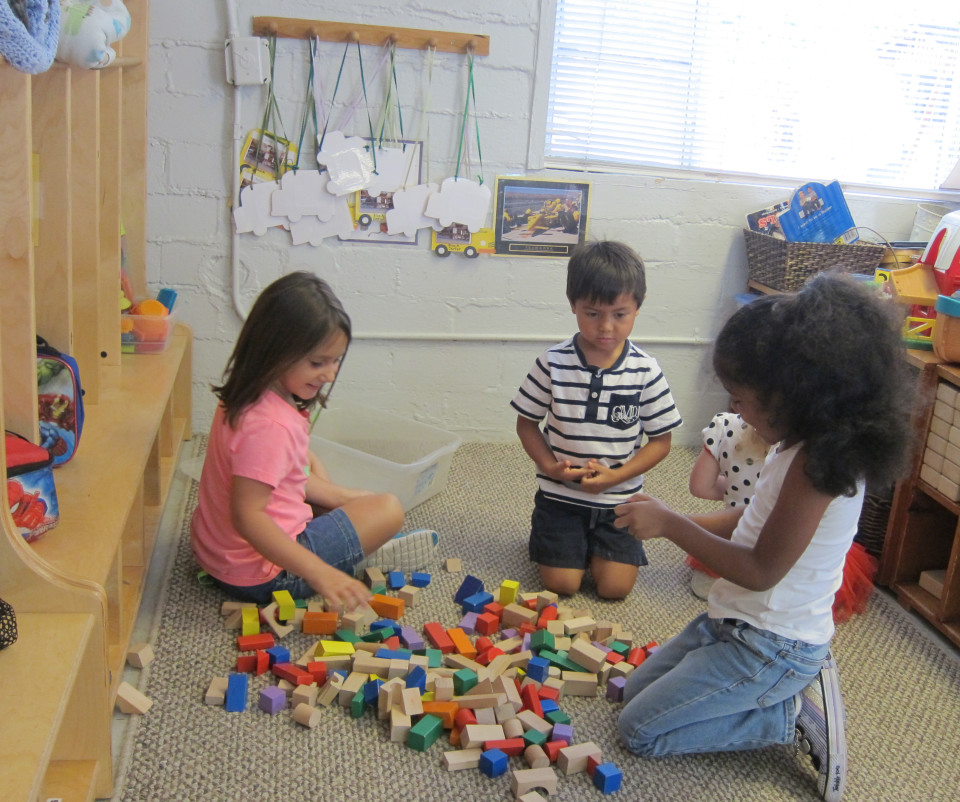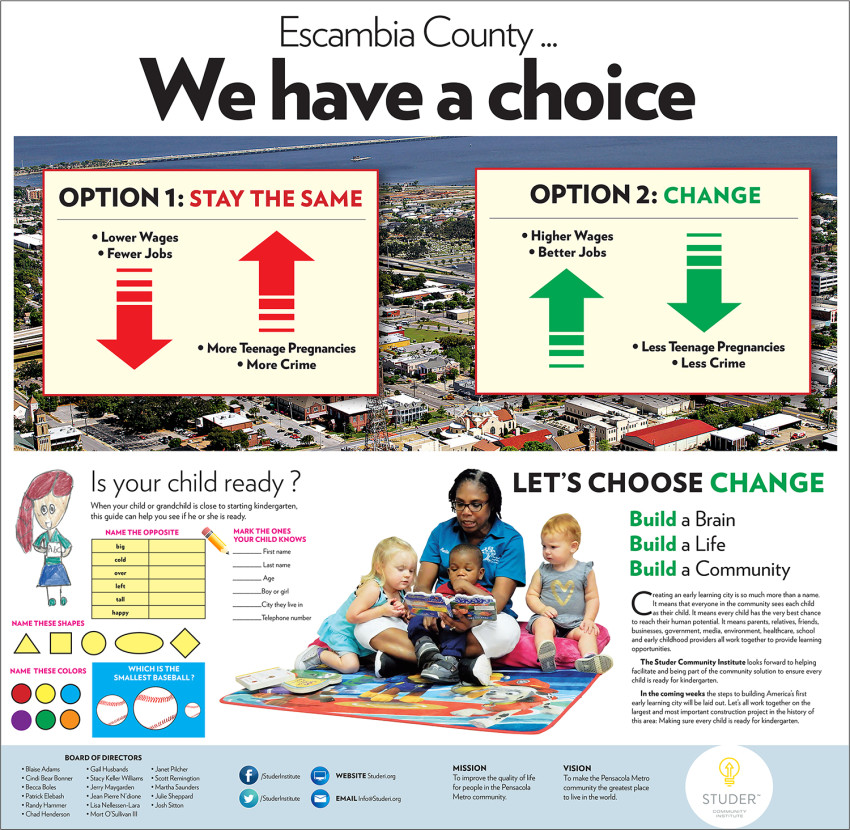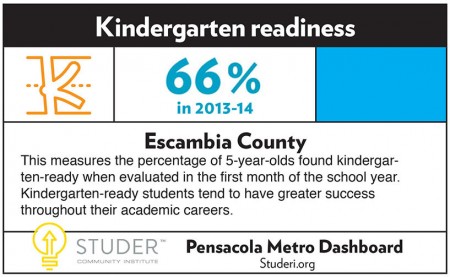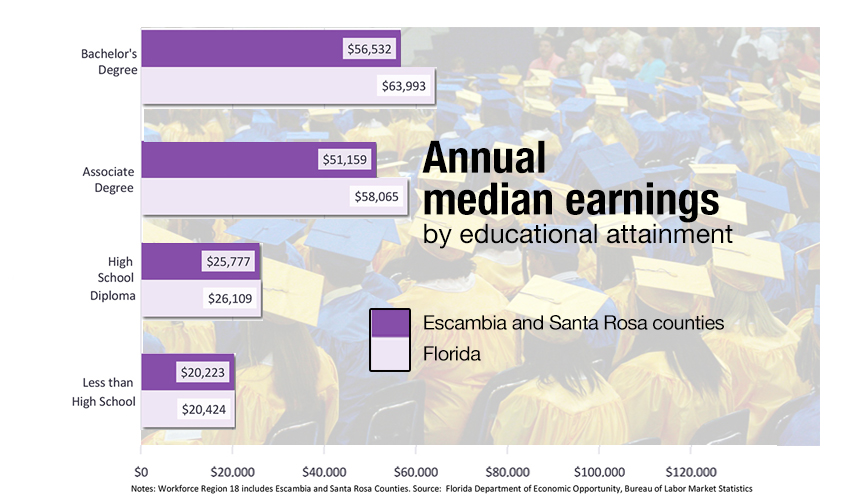SCI's Roadmap to an Early Learning City
- November 29, 2016
- / Shannon Nickinson
- / education,early-learning,report-early-learning-city

Students at Jamison Street Preschool in west Pensacola engage in center-based, interactive learning throughout the day. Credit: Shannon Nickinson.
The Studer Community Institute is starting a series that highlights the importance of early education and the impact it has on our children and our community.
The series launched with this ad in the Pensacola News Journal on Nov. 25.
The importance of a strong early education experience is born out in research that focuses on how the brain of a child develops and the impact that language has on that growing brain.
About 85 percent of the brain is developed by age 3 — nearly 90 percent by age 5. The number and kind of words a child hears in those critical years is an important key in how strong the connections in the brain develop.
Research shows that children from lower income families hear 30 million fewer words than children from well-off families. That "achievement gap" is a big contributing factor to the lag that many children often have when they start school.
In Escambia County, that gap is real — data from the Florida Office of Early Learning indicates that only 66 percent of the roughly 3,000 kindergartners in our schools are ready for school on the first day.
The kindergarten readiness rate is one of 16 metrics in the Pensacola Metro Dashboard, created with SCI staff in collaboration with the University of West Florida to give a snapshot of the community's economic, educational and social well-being.
Children who are ready for kindergarten are more likely to read at grade level by third grade. Third grade reading is often used as an indicator for the likelihood of graduating high school on time.
In Escambia County last year, 72.7 percent of high school students graduated. In Santa Rosa County, 83.2 percent of high schoolers graduated.
This chart shows the impact in real dollars of what finishing your education means.
The Institute's work in early learning is focused on helping close this gap for as many students as possible through research, parent education and community outreach.
We believe that by improving the kindergarten readiness rate, more students will be prepared for school, putting them on a better track to finish high school on time, get a good job and ultimately support families of their own.
That improves the quality of life for everyone in the community.



 CivicCon launches with a look at good growth in cities
CivicCon launches with a look at good growth in cities
 Building stronger brains one baby, one parent at a time
Building stronger brains one baby, one parent at a time
 SCI debuts commercial on Early Learning City
SCI debuts commercial on Early Learning City
 Entrecon: World class speakers and an opportunity to sharpen skills
Entrecon: World class speakers and an opportunity to sharpen skills
 PYP Quality of Life survey 2017
PYP Quality of Life survey 2017
 EntreCon Pensacola 2016: A look back
EntreCon Pensacola 2016: A look back
 Leadership tip: getting better employee takeaways
Leadership tip: getting better employee takeaways
 Leadership tip: be interested instead of interesting
Leadership tip: be interested instead of interesting
 Leadership tip: delivering difficult messages
Leadership tip: delivering difficult messages
 Brain Bags boost Arc, Early Childhood Court programs
Brain Bags boost Arc, Early Childhood Court programs